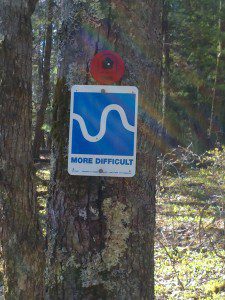 Harriet Tubman dreamed of flying to freedom, over landscapes she subsequently crossed on foot when she made her escape from slavery in the South. Later she was guided by specific precognitive or clairvoyant dreams to safe houses, river crossings and friendly helpers she had never encountered in waking reality. In this way, she escorted 300 escaping slaves to freedom, without ever losing one of her “packages”.
Harriet Tubman dreamed of flying to freedom, over landscapes she subsequently crossed on foot when she made her escape from slavery in the South. Later she was guided by specific precognitive or clairvoyant dreams to safe houses, river crossings and friendly helpers she had never encountered in waking reality. In this way, she escorted 300 escaping slaves to freedom, without ever losing one of her “packages”.
What a powerful example of how we can “dream our dream” in entirely practical ways! As we recover the true history of dreaming – which may be a secret history of the world – we will gain courage and confidence for the urgent and creative task of building a dreaming culture for the 21st century. A dreaming culture is one in which dreams are shared and celebrated in every environment – at the workplace, at the clinic, in schools and in families. In a dreaming culture, our lives and our interactions would be different, and magical. Here are some of the ways:
Community Dreamwork
By creating a safe space for each other to share and work with our dreams, we move quickly beyond barriers of prejudice and misunderstanding, and build deeper relationships. In our dreaming culture, families and larger communities will share and explore dreams in order to move beyond taboos, tell their troubles, achieve healing and resolution – and as wonderful entertainment, generating song and story, dance and theatre, as well as strategies for bringing the energy and insight of dreams into manifestation.
Dream Navigation
In our dreaming culture, it is generally understood – as most traditional dreaming peoples know – that we dream the future, maybe all the time. The futures we perceive in dreams are possible futures. By clarifying messages and taking appropriate action, we can change the odds that any particular scenario will be enacted. In our dreaming culture, we will check our dreams for guidance on the probable outcome of the choices we are making. As dream scouts, we will bring through dream guidance on the possible future for the benefit of others, and for the community as a whole.
Dreamwork in Medicine and Healing
In dreams our bodies show us what is going on inside them and what they need to stay well. Early warning dreams forecast conditions that may develop, often years before physical symptoms appear – and often counsel on prevention and alternative approaches. When we do become ill, dreams give us fresh and powerful imagery for healing and recovery. Because the body does not appear to distinguish between a physical event and a mental or emotional event that carries real energy, these images can help us reshape the physical blueprint. Some leading-edge research suggests that in this way we may even be able to change the cellular memory of the body. Above all, dreaming puts us in touch with the hidden sources of illness and wellness, and opens paths to recovering soul.
Dreaming in Schools
Keeping a dream journal is excellent writing practice, and constantly opens up exciting avenues for research. Telling dreams builds powerful communications skills and brings the gift of story. Dream rehearsal prepares us for tests – perhaps literal school tests – while dream incubation helps us to tap into a deeper source and bring through creative solutions. These are some of the reasons why dreaming and dreamwork deserve a central place in our schools, starting in pre-K. In our dreaming culture, schoolkids will gain credits for keeping dream journals. They will do projects on Einstein’s dreams, dreams in art and literature, dreams in social evolution and world cultures.
Dreams to Help the Dying
In our dreaming culture, the practice of dreaming is recognized as vital preparation for the transition to life beyond life. The Plains Indians say that the path of the soul after death is the same as the path of the soul in dreams. Dreaming, we learn to move smoothly and naturally into other dimensions. Conscious dreaming, like meditation, familiarizes us with paths and landscapes beyond physical reality. For those who do not have a dream and cannot meditate, the “dream transfer” technique offers caregivers wonderful ways to help open doors and clear the paths.
Dreaming and Future Science
Dreaming is central to the emerging science of consciousness, which is likely to be the most important science of the 21st century. Active dreamers and long-term dream journalists provide direct, experiential data that is crucial to new lines of scientific discovery and research. Research inside dreams – through conscious dreaming techniques – provides immediate access to multidimensional reality and a means of testing scientific speculation about parallel universes, the holographic model, and the possibility of travel across time.
The challenge before us is to marry the best of our science and scholarship to the ancient arts of dreaming that recognize dreams as both wishes and experiences of soul and offer a path for evolving consciousness that can help us build more compassionate and creative communities. We can dream our dream and we can dream our world if we remember, like Harriet Tubman, that we can fly.
Art: Harriet Tubman pointing to the North Star, and freedom. Painting by Jacob Lawrence

